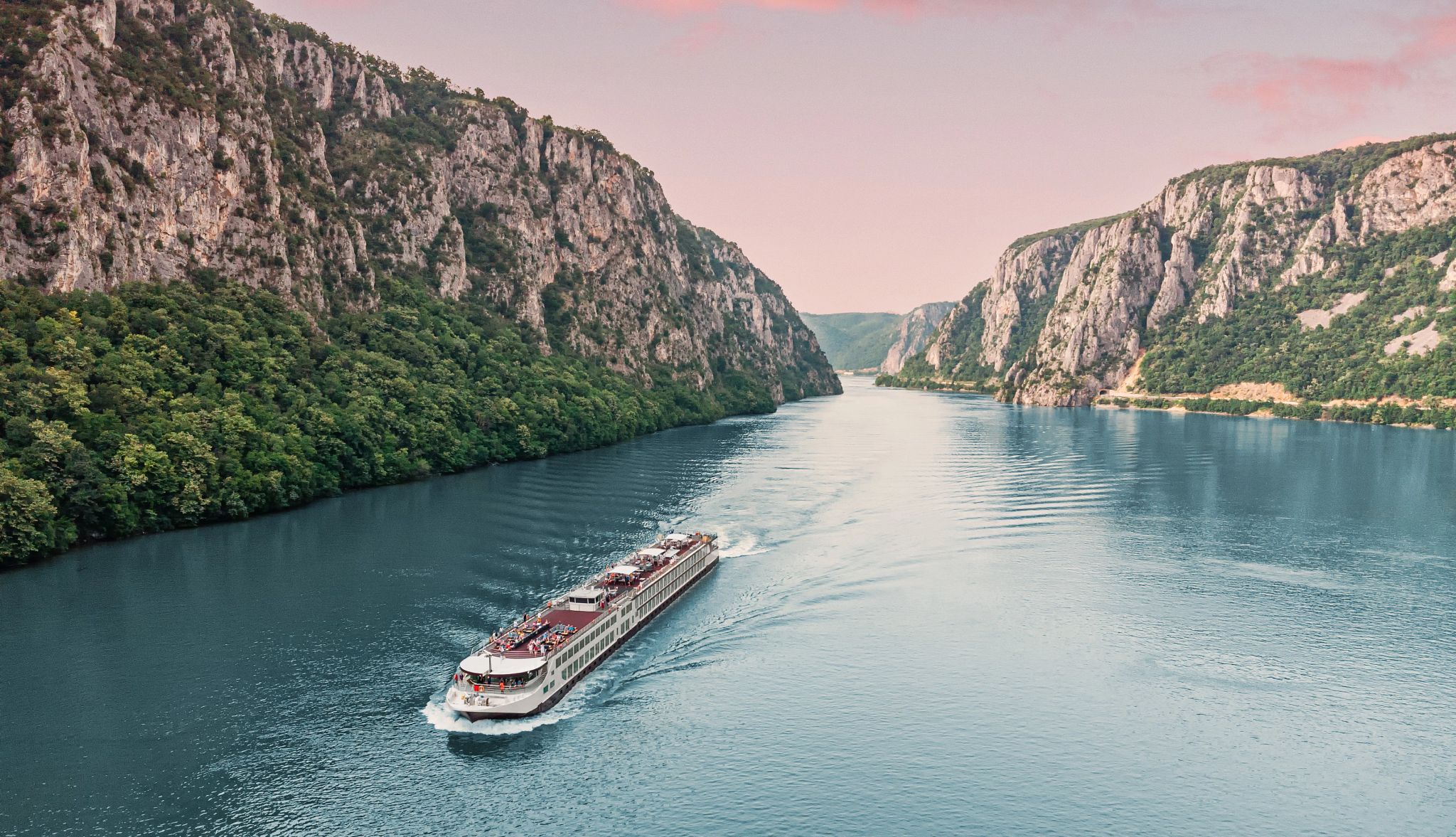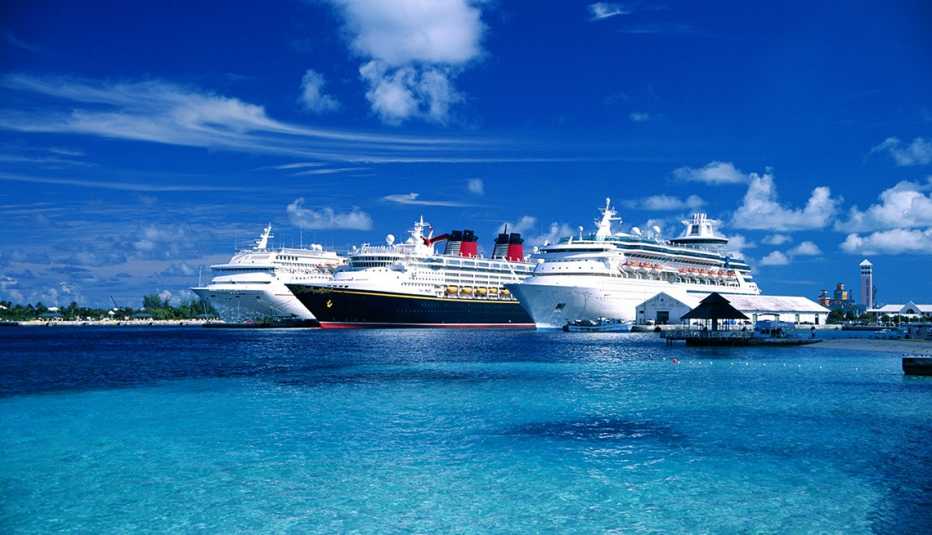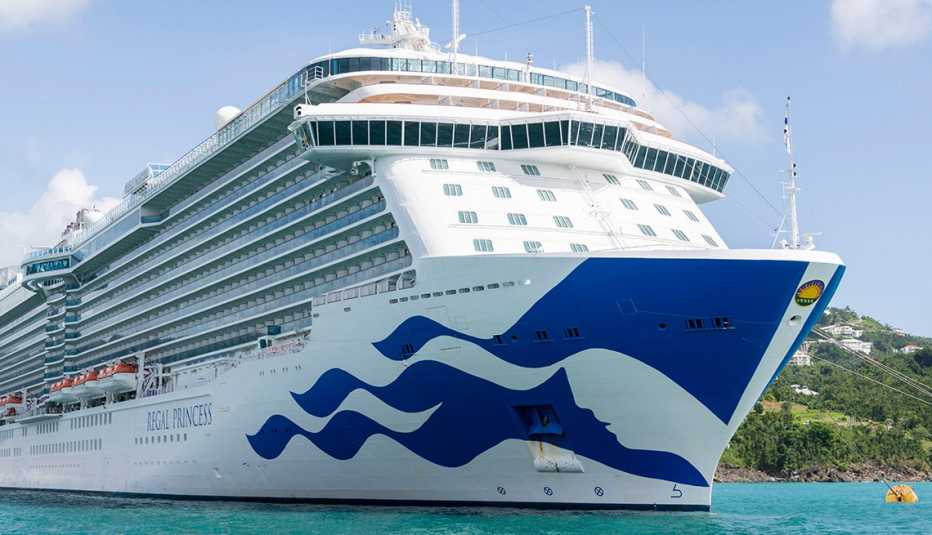AARP Hearing Center
While ocean cruises are well established, river cruising has blossomed only in the last 25 years or so. River cruises are very different from those that sail on the ocean. They’re more intimate and operate at a more leisurely pace. They’re also booming, growing 10 to 15 percent annually for the last decade, according to the Cruise Lines International Association, a cruise industry trade group. That growth is evidenced by the announcement that Celebrity Cruises will launch a fleet of 10 new river cruise ships in 2027.
Boomers have traditionally been the target demographic for river cruises, as they tend to have the time and the resources. Today, Generation X is also going on river cruises. Tauck, a river cruise tour company, reports that its guests are typically 55 and older.
Before you book your own river cruise, check out our Smart Guide’s 27 helpful tips, strategies and resources for memorable travel.
PLANNING YOUR CRUISE


1. Understand the differences between ocean and river cruises
By the very nature of where they sail, river ships are considerably smaller than oceangoing ships. While mainstream ocean cruisers carry up to 7,000 passengers, river ships in Europe carry fewer than 200 guests. “Ocean cruises … are essentially floating resorts,” says Gene Sloan, cruise editor at The Points Guy. “River cruises, by contrast, are much more heavily focused on the destination.” Tours are included; therefore, a river cruise will cost more per night than most ocean cruises, but you’ll have a better idea of the final price tag. Mary Jo Manzanares, founder of travel blog Traveling with MJ, notes that the smaller size means fewer entertainment options aboard. “Much of your time needs to be self-directed,” says Manzanares. “It’s a slower pace, so if you don’t like your own company or have trouble going for an hour without outside entertainment, river cruising may not be for you.”
2. Tap into trusted resources
Among the best-known resources is Cruise Critic, which features comprehensive ship reviews along with reader forums with more individualized advice. Cruiseline.com and Cruise Hive also provide user forums. Colleen McDaniel, editor in chief of Cruise Critic, is a fan of River Cruise Advisor, which specializes in European river cruising. “I especially like their city guides, which focus on all the places river cruise ships visit,” she says. Toby Saltzman, a Toronto-based cruise writer, looks at cruise reviews and destination websites. She researched France’s Seine River and knew she wanted a cruise that maximized time in Paris and allowed her to visit Monet’s gardens in Giverny, plus Normandy and the beaches of World War II. “Viking fit my needs … [and] included excursions to these sites … and also offered a convenient pre-cruise package to extend my time in Paris,” Saltzman says.
3. Choose a river
The majority of river cruise ships operate in Europe. The Rhine and the Danube rivers are both popular. “For a first-time river cruiser, I recommend a classic seven-night Danube cruise between Budapest [Hungary] and Passau, Germany,” says Sloan, for the mix of lovely scenery and wonderful European cities such as Vienna and Bratislava. “The Wachau Valley, in Austria, to me, is one of the most beautiful stretches of river in Europe,” Sloan says. But don’t overlook Europe’s other major rivers, including Portugal and Spain’s Douro; the Rhône, in France and Switzerland; and the canals of Belgium and the Netherlands. Other rivers to consider are the Nile, in Egypt; the Mekong, in Cambodia and Vietnam; the Amazon, in Brazil, Peru and Ecuador; and American rivers such as the Mississippi, the Columbia and the Snake.
4. Compare cruise lines
Cruise operators sail all the major rivers in Europe. However, cabins, service, food, activities and inclusions vary from one to the next. Some lines emphasize dining, others offer more in-depth tours off the ships, and a few cater to more active travelers. Saltzman suggests researching cruise lines that fit your style and budget, then contacting a travel adviser who specializes in cruises. Betsy Patton, a travel adviser with Naples, Florida-based Direct Travel, works directly cruise companies. “I really like Tauck [a cruise operator and tour company for first-time river cruisers], as they provide an all-inclusive experience,” including the services of four tour directors and excellent accommodations, says Patton. Sloan says some lines target an older, more sedentary clientele, with fewer active options. He says his favorite is Avalon Waterways, which offers hiking, biking and more traditional tours, like walking, wineries and tastings, and cultural outings, Sloan says. Viking, which will have 98 river ships operating by the end of 2026, offers the greatest variety of destinations, itineraries and departure dates.
5. Consider seasonal and niche-interest cruises
Beyond the standard itineraries, river cruise lines offer special-interest cruises that zero in on specific themes or activities. For example, Christmas market cruises are popular. They are concentrated on the Rhine and Danube and generally run from late November until Christmas. Tulip-themed itineraries through the Dutch Low Country run during the short blooming season, mid-March through April. AmaWaterways offers a “Soulful Experiences” collection of departures designed to shed light on a region’s Black history and culture. Other themed cruises include a wine or beer focus, fall foliage and cruises honoring D-Day and Jewish heritage.
6. Book a multigenerational family trip
Viking requires its guests to be at least 18, while other lines welcome younger ages. Tauck offers a collection of family-oriented river cruises, using ships with oversized cabins, some of which can sleep four. Sister companies Emerald Cruises and Scenic allow guests age 12 and up; Avalon stipulates 8 and older; AmaWaterways and Uniworld require guests to be at least 4 years old. Another option that can work for families is chartering a hotel barge, a smaller boat with accommodations for eight to 20 guests, which travels canals and smaller waterways, particularly in France and Britain.
7. Try a solo cruise
Single travelers will find river cruise lines welcoming. “A smile goes a long way at the sail-away party,” says Saltzman, who regularly travels solo. “Most ships have a dedicated social to meet other solo travelers, and people can connect at trivia and other games.” The only obstacle: Customarily, river cruises charged a single supplement of up to 100 percent of the per-person cruise fare. In recent years, however, the industry has begun to embrace solo travelers with reduced or no-supplement offers. Tauck and Avalon waive the single supplement for many cabins. American Cruise Lines, which has single cabins on its ships, provides accommodations without a single supplement.
8. Accessible river cruise options
River cruises in Europe are not always the best option for someone with limited mobility, says Sloan: “Getting on and off a river ship can be difficult for someone in a wheelchair or with other mobility issues.” Gangways rise and fall with the river, creating sometimes sharp inclines or declines; touring beyond a motor coach can also present challenges. In busier ports, river ships may be stacked against each other side by side, requiring guests to walk through two or three other ships to reach the pier, which can involve stairs or high thresholds. A wheelchair user might look at U.S. options: American Cruise Lines, for example, has river and coastal ships with ADA-accessible cabins and mobility-friendly features. The 386-passenger Viking Mississippi features nine ADA-accessible cabins.







































































